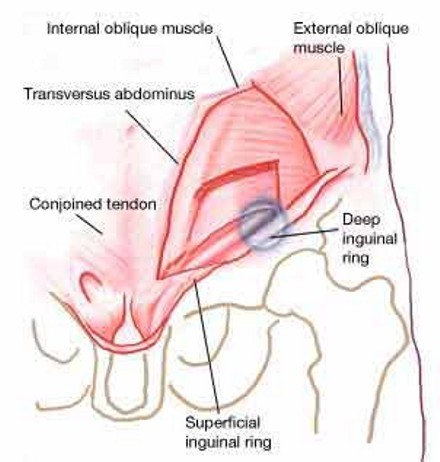
Gilmore’s Groin
The external oblique has an archway where blood vessels and nerves pass through. A groin muscle tear opens this archway, widening it, the internal oblique is pulled up and the transversus abdominus is left unsupported.
Symptoms include pain during sporting activities particularly twisting, turning, kicking and hip extension. This pain usually radiates to the abductor muscle region and occasionally into the testicles. The day following exertion the sufferer will complain of being sore and stiff and may find it difficult to rise from bed or get out of a car, or any activity involving rising from a low position. Coughing and sneezing will also increase pain.
Diagnosis is based on patient history and symptoms. At least a third of patients have a specific injury they can say is the cause of the pain but the rest is usually a gradual build up of wear and tear. The most notable clinical sign is the widening of the superficial inguinal ring on the affected side, which can be palpated. Once other groin related injuries are ruled out treatment for Gilmore’s Groin can begin.
Conservative treatment by a physiotherapist is usually commenced as pain allows. They will work on a program of exercises to stabilise and strengthen the muscles of the pelvic region. If conservative treatment fails to work, surgery is required to repair the damaged area and restore normal function. Following surgery a 4-6 week rehabilitation program with a physiotherapist will begin to increase strength and flexibility to pelvic muscles. During this period you will be encouraged to avoid twisting and turning movements to prevent aggravation of the repair.
In the past, this type of injury could have ended a sportsman career, but due to Gilmores identification of this specific injury, most are fit and able to continue with their sporting career.
For more physiotheraphy news click here.